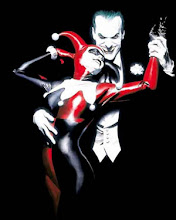1. We continued the conversation on rotation in waltz.
2. In double reverse: the person going back does the rotation, the person going forward needs to move. So it is lady rotate, man move; then switch to lady move, man rotate. In the over spin part, lady rotate again. man move. At this point, we get into something like a PP for a brief moment, before step out to the left whisk.
3. In natural turn, the leader sends his signal at the & before the 1, by bending the ankle. the difference between bending the ankle and bending the knee is that bending ankle shift the body forward, while bending the knee could keep the person in place (like sitting down, instead of moving forward). And it's the moving forward that is giving the signal to the girl to step out.
4. Swing and sway of the natural turn: the leader sway left to stop the turn. Not exactly sure if it's sway we are talking about here, because he said it's something in the legs that he is doing. He called this counter rotation.
Quick Step.
1. need to make sure that the legs are before the body in closed position. In promenade position, can keep the body tilted because nobody is in front of you.
2. pepper pot step has Q&QQQ, the first Q& each are 1/4 of a count.
General.
1. He asked us for a stronger/warm connection/fit, especially at the beginning of a partnership.
2. He asked me to free my upper body for rotations. He said I was too stiff to follow his lead. So I was able to correct it, and he said it was good.
2. In double reverse: the person going back does the rotation, the person going forward needs to move. So it is lady rotate, man move; then switch to lady move, man rotate. In the over spin part, lady rotate again. man move. At this point, we get into something like a PP for a brief moment, before step out to the left whisk.
3. In natural turn, the leader sends his signal at the & before the 1, by bending the ankle. the difference between bending the ankle and bending the knee is that bending ankle shift the body forward, while bending the knee could keep the person in place (like sitting down, instead of moving forward). And it's the moving forward that is giving the signal to the girl to step out.
4. Swing and sway of the natural turn: the leader sway left to stop the turn. Not exactly sure if it's sway we are talking about here, because he said it's something in the legs that he is doing. He called this counter rotation.
Quick Step.
1. need to make sure that the legs are before the body in closed position. In promenade position, can keep the body tilted because nobody is in front of you.
2. pepper pot step has Q&QQQ, the first Q& each are 1/4 of a count.
General.
1. He asked us for a stronger/warm connection/fit, especially at the beginning of a partnership.
2. He asked me to free my upper body for rotations. He said I was too stiff to follow his lead. So I was able to correct it, and he said it was good.
